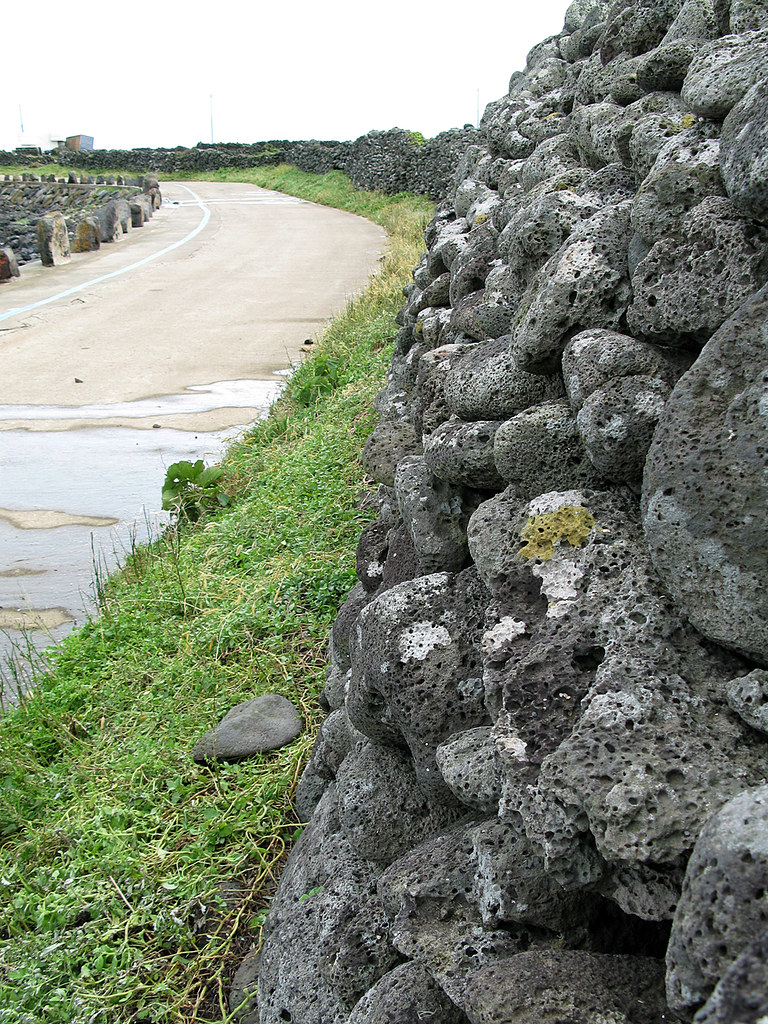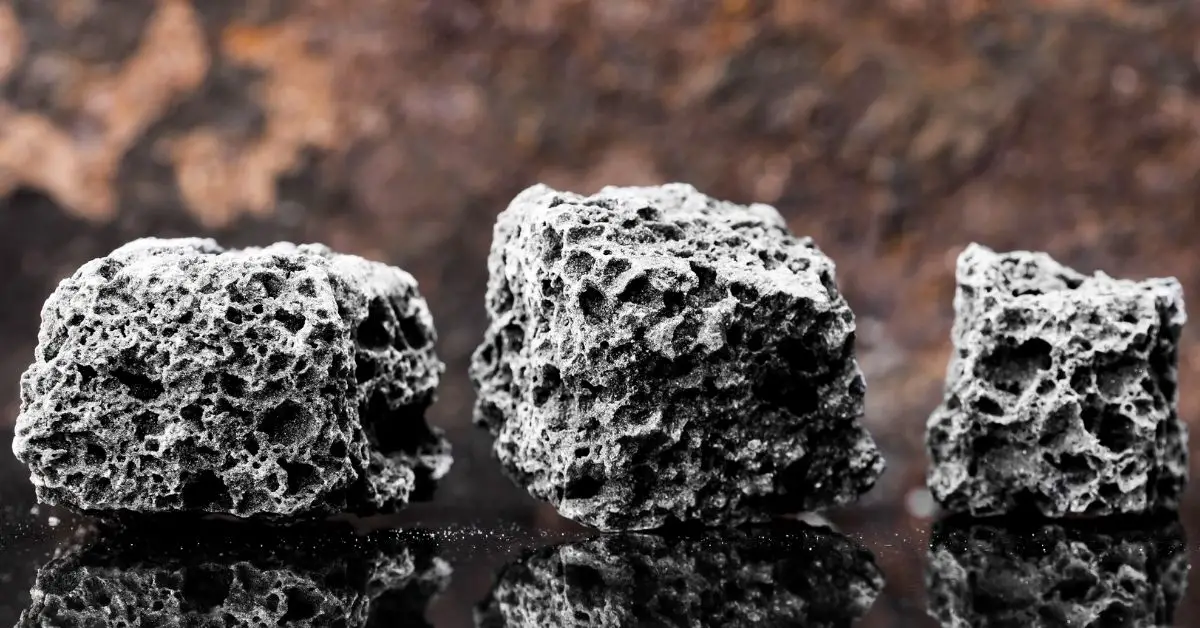Lava rock is a type of volcanic rock that has been solidified. It’s also possible to get molten lava rocks, which are often used in ponds as unique decoration features.
Lava rocks can come in many different colors and textures, and they typically have one or more holes drilled into them so that the water will flow through them smoothly. Lava rocks for ponds are usually obtained from quarries where they were first mined out of the earth, these types of stones tend to be less expensive than those imported from other countries.
Some people say that lava rocks make an ideal material for building a pond because it can provide nearly all-natural filtration while still providing an attractive appearance when placed around the edge of your pond. But others disagree, suggesting that lava rocks don’t last long in ponds because they tend to sink after a while and can hurt fish if they move around the tank.
Is lava rock good for ponds?
Yes, lava rock makes an excellent material for ponds if it’s properly designed. It can be used to create beautiful cement statuary and interesting shaped fountains, but the main advantage is that lava rock provides a lot of room for bacteria to colonize on the pond’s surface without clogging up your waterway.
Some types of aquatic life will even choose to make their home in some hollowed-out areas of lava rocks, which means they can provide extra protection from predators and help keep your fish healthy.
Cutter Backyard Bug Control Spray Concentrate (2 Pack), Kills Mosquitoes, Fleas & Listed Ants, 32 fl Ounce
26% OffEAST OAK Outdoor Storage Box, 31 Gallon Deck Box Indoor and Outdoor Use, Waterproof Resin Storage Bin for Package Delivery, Patio Cushions, Gardening Tools, Outdoor Toys, Lockable, UV Resistant, Grey
13% Offaddlon 100FT(50FT*2) LED Outdoor String Lights Waterproof Patio Lights with 32 Shatterproof ST38 Replaceable Bulbs(2 Spare), Dimmable Outside Hanging Lights Connectable for Porch, Backyard, 2200K
22% OffLava rocks are also lightweight so you won’t need heavy equipment or lots of manpower to move them around like other types of stone might require, making them easy to transport and install in your backyard pond.

Why would you want to use lava rocks in your pond?
Using lava rocks also helps make it easier for you to place your pond in a remote area of your backyard where you won’t be able to fill it with large amounts of water because lava rocks do not retain excess water and can handle being empty more easily.
Lava rock, when used for ponds, is sometimes drilled with holes so that the water will flow through them smoothly without causing any problems or clogging up the rocks. This makes them ideal if you want to create an exciting fountain shape or add interesting shapes to your koi pond that don’t typically occur in nature.
The benefits of using lava rocks in a pond:
They are easy to obtain from most local quarries because they can be mined without causing any harm to the environment, which saves a lot of energy and other resources that would otherwise go toward extracting them from foreign sources.
Here is a list of more benefits of using lava rocks in a pond
- Lava rocks don’t retain water, which means they’re easier to maintain and can be installed in any location
- Lava rocks are lightweight so they require less effort for installation
- The large surface area provided by lava rocks promotes the growth of bacteria, which ensures that your pond is well-filtered
- Lava rocks are inexpensive, so you won’t need to break the bank to get some for your pond
- Lava rocks don’t stick together like concrete does and can be easily moved once they’re installed
The cons of using lava rocks in a pond
Lava rock in a pond often sinks after a while because holes created in the rock that allow water to flow through them also allow air into the interior of the rock. When air enters the rocks it displaces the water inside of them, causing them to sink.
In order to prevent this from happening you’ll need to make sure that all surfaces facing the inside of your koi pond are coated with silicone or another material that will prevent air from entering, otherwise, your lava rocks will most likely sink over time.
Another potential problem with lava rock in a pond is that it can be very sharp and hurt your feet if you step on it barefoot. You also need to watch out for small creatures who may try to take up residence inside the rocks, especially guppies who like to live in small, protected spaces when given the chance.
If they do decide to make their home there, you’ll need to find some way of removing them without causing damage to the rocks or hurting the fish.
Lava rock can also break if you step on it with hard-soled shoes, so be careful when you’re cleaning your pond of debris and other small objects. You’ll also want to make sure that your kids don’t play around with lava rock in your koi ponds because they could easily hurt themselves by stepping on a sharp edge or piece and cutting their foot open.

What should you put in the bottom of the pond?
The best bottom for a pond is one that does not leach phosphates. This means it needs to be something inert like pea gravel, lava rock, or native soil. Anything else will have some kind of fertilizer in it and this will cause green water algae problems down the road.
Pea gravel is the easiest and least expensive but might look bad depending on how much of it you need to use. It may be an inch deep all over or just a couple of inches in the deepest part.
Lava rock is harder on your back and more expensive, but it does look nicer. You should probably cover this with some kind of stone armor for protection. This can be regular gravel (which will eventually leak phosphates), or some kind of synthetic material like a “vacation stone” (mainly plastic and not as durable for the long term).
Lava rock is inert, which means it won’t leach any minerals into the water. It also doesn’t break down to make mud in the bottom of the pond. But it will break down when your fish and filter pump grind it up to where it’s small enough to fall between the cracks in the rocks, clogging things up.
Native soil is the best, but it’s more expensive and harder on your back. Anything you put in has to be preferably loamy to help with drainage. It also has to have no phosphates in it, which means you will need a soil test for phosphates before using it. If your soil is bad, then you’ll have to rent a backhoe and dug out some dirt from somewhere else.
Another option is having an engineered bottom with plastic liner, filled with crushed granite or another inert material that doesn’t break down and turn into mud. This is a good option if you have trouble getting the water level right since it will always need to be higher in the center than the edges.
Is lava rock good for pond filter?
A pond filter can be defined as a frame in which you put various types of stones, gravel, or rocks. Such an arrangement is quite good at filtering the water and making it clean for fish and other aquatic life. A number of people think that lava rock makes a perfect pond filter because it comes free from your backyard and has been used to construct filters for decades.
However, there is still no consensus on whether lava rocks are good for pond filters or not. This is because some people have different opinions about the use of lava rock for this purpose. Some people say that it is okay to put in someplace close to a pond while others go ahead to say that you should avoid using volcanic rocks altogether.
Please note that rock of volcanic origin (which lava rocks are) has the potential to leach heavy metals which can pollute water. When you build a filter using lava rock, it is necessary to rinse the rocks thoroughly with clean water before their installation. This will wash off any harmful chemicals on them.
After this, you can proceed to make use of the lava rocks as a medium for fish pond filtration.
In Conclusion
If you’re looking for a way to improve your pond, it’s important that the bottom of your pond does not leach phosphates. This means using pea gravel or lava rock is best as these are inert and won’t break down over time (like regular rocks).
If you want to use lava rocks in this fashion, be sure to rinse them thoroughly before installing them so they don’t have any harmful chemicals on them. It may also help if you cover the lava rock with some kind of stone armor such as regular gravel or synthetic material like “vacation stones” which are mostly plastic and less durable long-term.





















